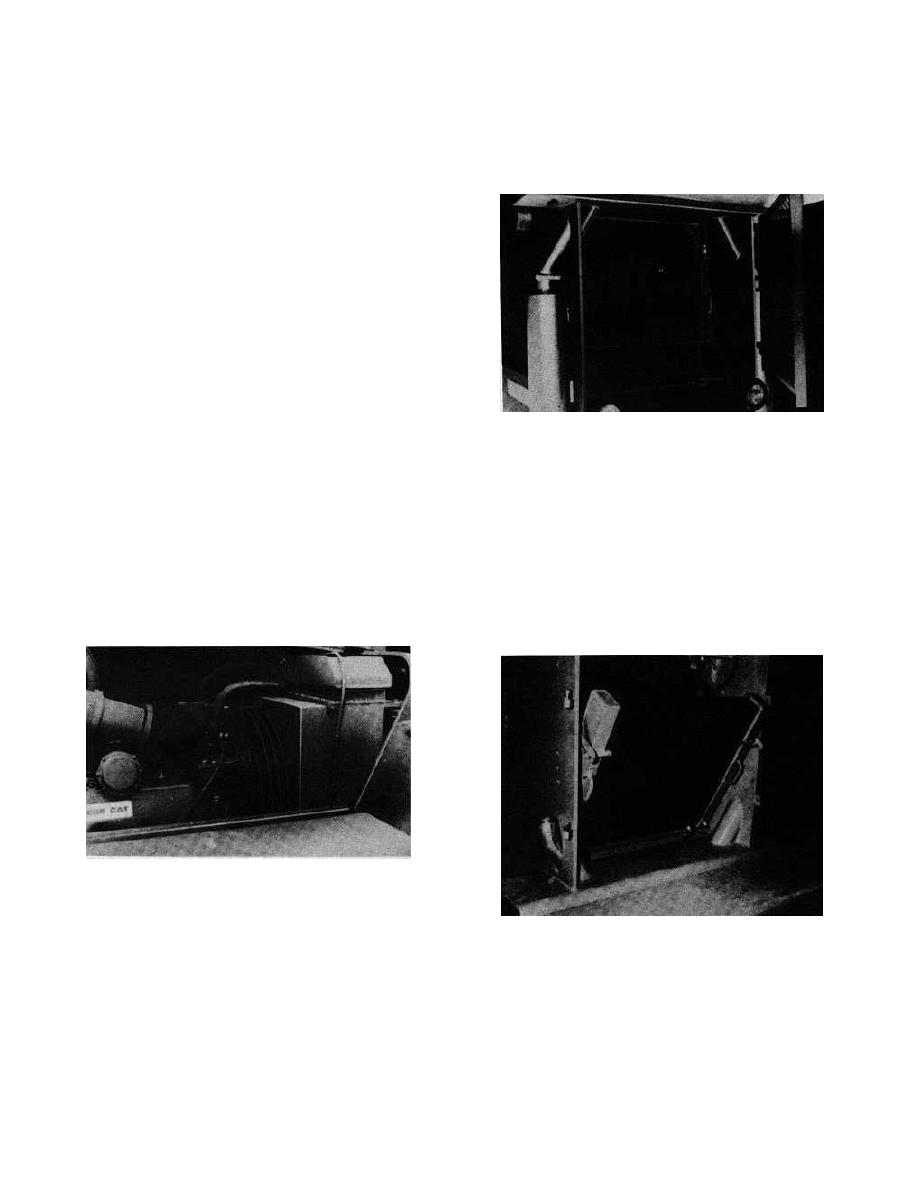 |
|||
|
|
|||
|
|
|||
| ||||||||||
|
|
 COOLING SYSTEM
MAINTENANCE:
OIL COOLER REMOVAL:
CHECK COOLANT LEVEL daily with engine
1. Remove guard retaining bolts and swing
cool and stopped. Maintain coolant level to
open radiator guard.
within 1/2 inch (1,5 cm) below bottom of fill
pipe. Do not fill completely as coolant will
expand as it is heated. Add water or antifreeze
with rust inhibitor as required, avoiding use of
dirty water or water with high mineral content.
Do not use antileak additives or antifreeze with
antileak additives. Do not use 'DOWTHERM
209'. Causes of constant coolant loss should be
investigated.
Caution: If it is necessary to add coolant while
engine is warm, extreme care should be taken
when removing radiator fill cap. Adding coolant
to a hot engine may crack or distort engine
components. If engine overheats, add coolant
Access to Radiator
slowly with engine running.
CHECK ANTIFREEZE protection every 50
2. Disconnect and cap transmission oil
hours. Maintain readings well below antici-
cooler hoses if cooler is to be removed
pated temperatures, adding permanent type
completely. For rad cleaning purposes, hoses
antifreeze with rust inhibitors as required. Do
may be left connected.
not use antifreeze with antileak additives. Do
not use antifreeze 'DOWTHERM 209'.
3. The radiator is equipped with a hinged oil
cooler. Loosen bolts top and bottom to swing
INSPECT RAD HOSES AND CONNECTIONS
oil cooler down. Remove bolts if oil cooler is to
every 50 hours for leaks or damaged hoses.
be completely removed.
Radiator Hoses
STEAM CLEAN RADIATOR every 50 hours or as
required to maintain optimum cooling efficiency.
Hinged Air-Oil Cooler
The importance of a clean radiator
cannot be overstressed. Remove air-oil cooler
leaving hoses connected. Clean carefully and
inspect core for bent or damaged fins before
reinstalling.
K300
Rev. 760501
40-3.1
|
|
Privacy Statement - Press Release - Copyright Information. - Contact Us |